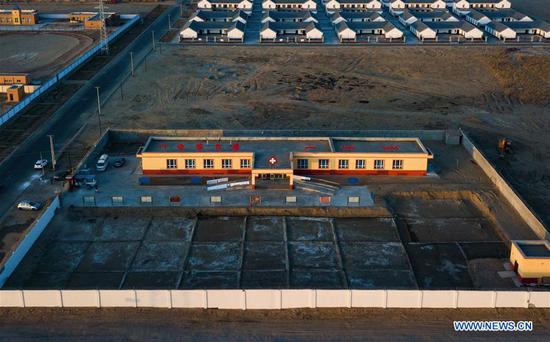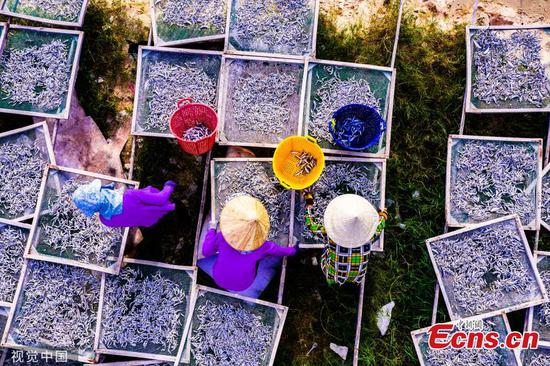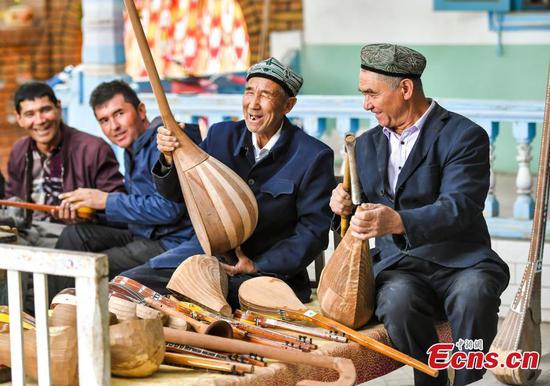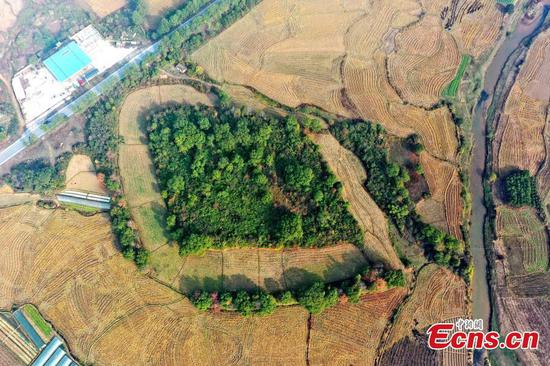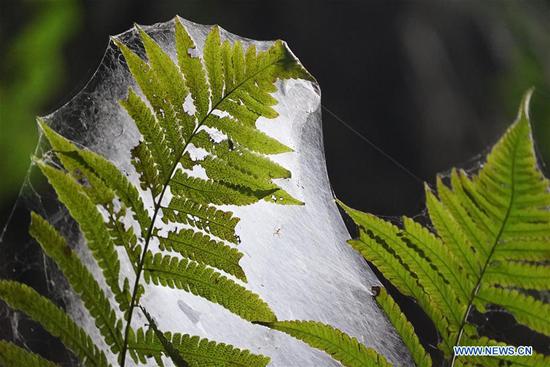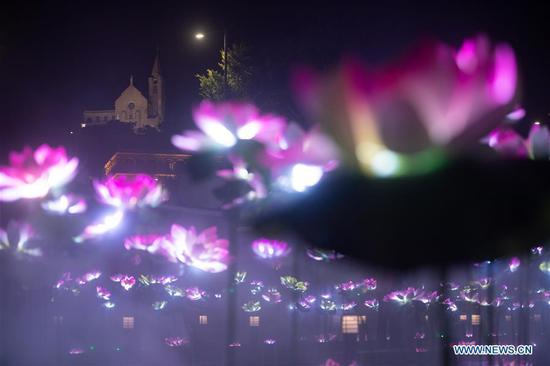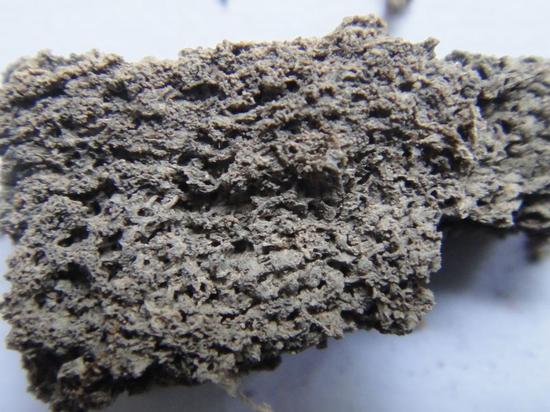
The carbonized texture residue in an urn coffin at the Wanggou site in Henan central China's Henan Province. (Photo provided to Xinhua)
Chinese archaeologists have used new technology to ascertain the carbonized texture residue in an urn coffin buried in the Neolithic Yangshao Culture ruins in central China's Henan Province as the world's earliest found silk fabrics.
"With the help of the technology of enzyme-linked-immunosorbent assay (ELISA) developed by experts in the China National Silk Museum, it has been confirmed that the carbonized fabrics taken from the urn coffin at the Wanggou site in Henan are silk fabrics," said Zhao Feng, curator of the museum on Monday.
Gu Wanfa, director of the Zhengzhou Municipal Research Institute of Cultural Relics and Archaeology, said that a cluster of the Yangshao Culture ruins dating back 5,000 to 7,000 years have been found in Henan. In addition to the silk fabrics at the Wanggou site, the same fabrics were unearthed at the Qingtai site and there are bone carvings of silkworms found at the Shuanghuaishu site. All are solid evidence to prove that the ancient Chinese began raising silkworms and silk production more than 5,000 years ago.
"The silk fabrics at the Wanggou date back between 5,300 and 5,500 years. Previously, proven silk fabrics were unearthed at the Qianshanyang site of the Liangzhu Culture dating back 4,200 to 4,400 years," Gu said.
He said through electron microscopic observation, they found fine yarns in the silk fabrics woven using four-warp twisted rods.
The fabrics were put in the urns to wrap the bodies of the dead. At the Wanggou site, the silk remnant was found in the skull of a child. Gu said this suggests that at that time, China's silk technology had matured rather than just begun.
He said one of the fabrics was leno dyed before the weaving process. The ancestors developed the method of cooking the silk to prevent the dye from fading.
Silk originated in China and later become one of the country's major trade items. However, previous technical means were not enough to detect the fiber material of carbonized textiles to provide archaeological evidence of a silk's origin.
In 2010, the China National Silk Museum began key scientific research set up by the National Cultural Heritage Administration on the origin of silk.
"As the testing technology has become more and more cost-efficient, we will carry out extensive sample testing in Yangshao Cultural ruins in Henan in order to map the origin and distribution of silk in this area," said Zhou Yang, director of the national silk research program.
The urn coffin burial found in Yangshao in central China actually resembles the shape of a silkworm pupae, which might imply ancient worship wishing that the dead can be reborn after death as a silk moth after it breaks through the cocoon, said Zhao Feng.









